
If you’re looking at creating your own one-product dropshipping store, you’ve come to the right place. In this article, I’m going to guide you through each of the necessary steps, each of the decisions you will need to make and how they will impact your business.
This step-by-step guide will act as a mini free dropshipping course to create your own profitable one-product store. I will try to be as detailed as possible and provide you with all the need-to-know information without rambling on with unnecessary details.
If you’re a complete beginner, I’ll get the basics out of the way and explain what is a one-product store?
An eCommerce store that focuses on selling a single unique product is a one-product store. Although they are designed around a specific product, often these stores will have additional variants, accessories, up-sells and cross-sells which are used to increase the average order value.
Are One-Product Stores Worth It?
To build a successful one-product store, you need to know why they work. At first glance, they can appear like a strange choice and may not seem worthwhile. Why sell a single product when you can sell multiple products?
One-product stores are definitely worth it as they are relatively fast and inexpensive to set up, once optimized they require little ongoing work and are easily scaled with the potential to be very lucrative.
Having a store with a single product has many advantages over multiple product stores:
- They are faster to set up as you only need to add one product and write one product description.
- Less work updating product information.
- Only need to run and optimize ads for a single product.
- You will only need to photograph or source product images and videos for one product.
- You only need to work with a single supplier.
- Less customer service
- Buying in bulk is less risky
- You’re more likely to rank in Google with a single product
Don’t underestimate how important these factors are.
For instance, only working with a single supplier will make your life much easier than working with 10 suppliers. As a drop shipper, you are relying on a supplier to manage inventory, package and ship your products.
All this is out of your hands and likely to go wrong at some point, the more suppliers you deal with the more likely problems will occur.
1. Best Products for a One-Product Store
Deciding on a product to design your store around is the most important factor in determining your success, as it should be with a one-product store.
The product is the star of your show and if you nail every other aspect of your store and marketing, it’ll be for nothing if you choose the wrong product. So you need to understand what kinds of products are suitable to focus an entire store around.
Let’s cover the criteria for the best products for a one-product store. Just to be clear, all of these criteria are not essential but ideally, you want as many as possible to give you the best chance of success.
Hard to Source Products
If the product can easily be found in your local shopping mall, it may be difficult to persuade customers to buy it from you. Why will anyone buy from your dropshipping store when it will most likely be cheaper at a mall and they don’t have to pay or wait for shipping.
Unique Products
Uniqueness helps a product stand out and appear more specialized than it is. If you’re dropshipping from China, a consumer will be far more likely to wait for long shipping times for a product that is unique as opposed to a regular product.
Products that Solve a Problem
Products that solve products are far easier to sell. If you can prove to someone that you can solve one of their problems, the likelihood of them purchasing is greatly increased. Think of it as your selling a solution instead of a product.
Wow Factor Products
“Wow factor” falls into the same category as unique. You want consumers to be pleasantly surprised by the product. This will be different for each product but it may be in the form of its appearance or the function it performs.
It Should Be Brandable
You can brand any product, however, branding is not as effective with some products. The goal of a one-product store is to give the impression to your customer that you are the creator and brand behind the product (we will get to this later) that you are selling.
It Needs to Be Profitable
Can your product be sold at a high enough price point that it still makes a considerable profit margin after you’ve paid for ads and shipping? What you can buy the product for and what you do believe consumers will pay for it if you brand it correctly?
Passionate Target Audience
Your job will be far easier if your product has a very passionate and hungry audience of buyers. If you know your audience, you can advertise directly to them as well as design your store with them in mind. If your target audience is everyone you’re really targeting nobody.
Examples of Profitable One-Product Store Items
Below are some examples of items that one-product stores are selling successfully. This should give you some ideas for your own one-product store.

This is an example of a high-ticket problem-solving product that is unique. There are several one-product stores selling this product and it’s not surprising why. It targets cat lovers and most pet owners are willing to spend a lot of money on their pets, especially when it means you don’t have to smell or clean up any more cat feces.
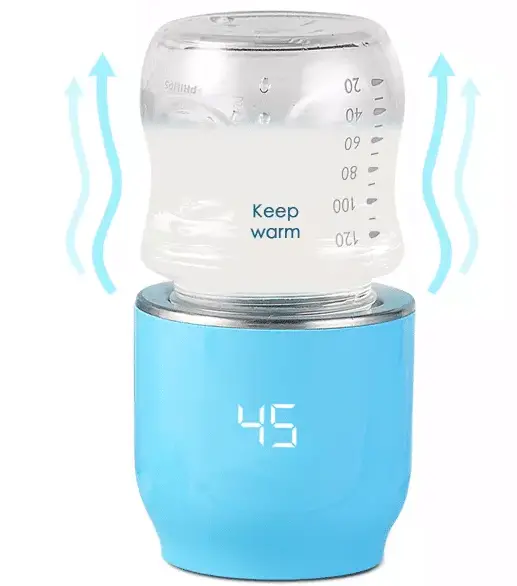
I don’t really know if this is a product found in most brick-and-mortar stores but I have not seen it. This is a USB bottle warmer for moms to use on the go. It targets a large audience in parents and is a product just about every family could use. There are several different versions of this product being sold and multiple one-product stores successfully selling it.
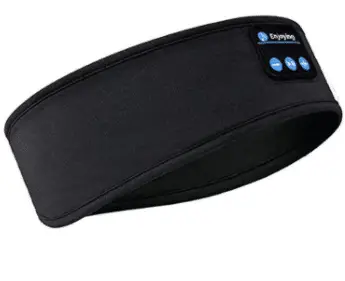
This wireless Bluetooth headphones can be used as a headband. They make an ideal product for branding, they solve a problem and can be targeted towards different audiences. It can be used as a solution for sleep or simply as an alternative to wearing headphones whilst walking or working out.
For some additional ideas for a one-product store, I suggest you read this article as I provide 30 products.
2. Is Your Product Competitive?
You always want to check how much competition you’re up against, how good are your competitors and can you compete with them.
First of all, you’ll most likely be up against competitors so don’t allow this to stop you, however, there is a limit to the amount of competition you want to face.
A great example of this is the LED teeth whitening mouth guard. It’s an example of a great one-product store as it solves a problem, it’s brandable and a decent profit margin can be made on it. The problem is there are so many of these stores going around that it is a little too competitive to be a viable option.
Ideally, you want to find a product that is being sold in niche and general stores but not by many one-product stores. If other stores are selling the product and running ads for it, they’re telling you that the product is in demand. Nobody runs ads on a product that is not selling.
Competition is not always bad as it’s a way of validating that a product is profitable. If you see competition but believe you can make improvements or have a different perspective on how you want to market the product, it may be worth pursuing.
You need to remember that most people simply copy what’s already working. If you find an item that has 5 one-product stores all selling the same product, there is a good chance 4 of those stores are just copying the original store.
Thinking outside the box and coming up with a unique approach will often allow you to stand out from the crowd.
Knowing how much competition you’ll face is important, but you also need to know if the public is even interested in your product. The best way to do this is to use a keyword tool to find the demand for your product.
A keyword tool allows you to check how many times in a month your product is being searched for. You can filter the results by specific countries or worldwide if you only plan to sell to certain countries.
Many of these tools are hundreds of dollars a month, however, I know of a much more affordable alternative. Key Search is $17 a month and if you click the link I provided and use the discount KSDISC you’ll receive 20% off. If money is tight do all your keyword searches you can and simply cancel it before the month is out.
3. Where to Source Products For Your One-Product Store?
The number one supplier from the majority of drop shippers is AliExpress. If you’re not too familiar with AliExpress, it is like China’s version of eBay with millions of products to choose from. Most people dropship from AliExpress because the prices are cheap, they stock many unique products and a lot of people simply aren’t aware of AliExpress or know how to use it correctly.
There are however many problems with dropshipping from AliExpress including unreliable suppliers, inferior product quality and slow shipping times. Better alternatives are to use suppliers such as CJ Dropshipping or Zendrop, they will reduce the number of issues associated with AliExpress.
If there is a product you want to sell from AliExpress that CJ or Zendrop does not stock, simply contact them, both these platforms can usually source any product that AliExpress stocks. Their prices are similar to AliExpress but they will be far more reliable.
These platforms are great in the initial stages when you’re trying to validate whether a product is worthwhile pursuing. But as you start making consistent sales, there are better alternatives. I will cover these alternatives in a later section.
4. How to Build Your One-Product Store
This is the part many beginners to the eCommerce world fear, however, you shouldn’t. Building a store these days is relatively easy as you simply choose a theme for your store and alter it as you please. Once you know the basics you can create a full eCommerce store in a few hours.
These are my recommendations if you’re building a store for the first time:
- BigCommerce – $29.95 a month for the basic package
- Wix – $27 a month for the basic package
- Shopify – $29 a month for the basic package
- WooCommerce – Free to use but you will need to pay for hosting.
Out of the 3 options, Shopify is the most popular choice as it is a great all-around performer. The main issue I have with Shopify is so many dropshipping stores are using Shopify’s free themes that consumers are easily identifying dropshipping stores as they have a similar look.
A lot of people feel ripped off when they buy from a dropshipping store and tend to avoid them. If you want to use Shopify and can fit it into your budget, I’d recommend purchasing a theme as it will look far more professional.
BigCommerce currently has 12 free themes to choose from and they look great. They have plenty of advanced sales features already pre built-in that other platforms require a paid app to use. Because of these features, it is slightly more complicated to use than Shopify. No transaction fees with BigCommerce which is a big advantage.
Wix is easy to use with its drag and drop interface. If you’re a complete newbie to eCommerce and are not at all tech-savvy Wix may be worth considering. One big advantage is Wix has a lot of free themes to use.
WooCommerce is a free plugin when you use WordPress but you will need to pay for hosting, one of the best options is to use Bluehost. Bluehost is more than adequate and will only cost a few dollars a month through this link.
Just because WooCommerce is free does not mean it’s inferior to the other options. They have the ability to customize your store but also with that the learning curve is slightly steeper. If you’ve used WordPress before, WooCommerce will be easy.
Each of these website builders have tutorials on building your store and there is an abundance of them on YouTube.
Which Theme is Best for a One-Product Store?
You have so many options when it comes to themes for one-product stores. I suggest you check out theme forest for some affordable and professional themes. Theme forest has themes that are suitable for any of the major eCommerce platforms.
If you have the budget, the Booster theme would be my pick. It’s a premium theme that looks amazing, is packed full of sales features and is really fast. If you’re on a tight budget the other themes will still look great and will do the job.
My suggestions for one-product store themes would be:
If you’re after some more info, I suggest you read my article on the best one-product store themes.
5. How to Brand Your One-Product Store
There are several aspects included in this branding step that is essential, so please don’t neglect this step.
The reason one-product stores work is that they give the impression to the customer that the product they are selling is very specialized and is the original creator of your product. You need to do the same, so how is this done?
How to Name Your One-Product Store?
This is very important, your store needs to sound like a brand and ideally still relate to what your product is.
For example, a one-product store selling the self-cleaning cat toilet shown above is called Cat Genie. This store name refers to the product itself whilst also sounding like a genuine brand.
If the product was called Cat Toilet instead, it would sound generic, unbranded and unspecialized. A customer would simply go to Google, type in Cat Toilet and look for the cheapest price for Cat Toilet online. However, because they branded the product as Cat Genie, it appears like they are the owner of the product and price checkers won’t find the same brand elsewhere online.
Create a Logo
When it comes to creating a logo, try and keep it reasonably simple for several reasons. Simple logos tend to stand out more, are more recognizable as well as make your store look less cluttered.
Another big advantage is if you decide to private label your product down the track, it will be easier and look better to have a simple sleek logo added to your product.
If you want a quick and easy way of creating a logo, you might consider using Shopify’s logo maker which is free to use.
Another option is to use Fiverr’s Logo Designers and pay someone to create a professional logo for you. Depending on your design, it could cost anywhere between $20 and $100.
My advice would be to go to Canva and create your own logo. Canva has heaps of logos you can choose from and you can easily alter them to fit the theme of your store. They have a free version which may be adequate or for the pro version, you can pay $18 for a month.
Canva is probably one of the most useful tools you can use if you have any kind of online business. You can easily create professional posts and images on all your social media platforms.
Theming Your Website
The look of your website needs to match the product you sell and relate to your target audience. For example, if you have a store a tent, you’ll want earthy colors. This will obviously be very different if you are selling a baby sleeping bag.
If the colors of your store don’t match your product it will look out of place and customers won’t trust it.
As a general rule, your website should be black, white and one other main color you use throughout your store. There are exceptions to this rule but this is a rule most stores follow. Too many colors looks messy, everything tends to blend in and a single color makes your store more easily identifiable.
The only other place I recommend you use a different color is your CTA (Call to action) buttons such as add to cart buttons. These are the buttons you want your customers to press so you want them to stand out.

Check out the color wheel above. Whatever the main color is for your store, your CTA buttons should be a contrast which will be on the opposite side of the color wheel. For more information on branding, I suggest you read my article which will give you a step-by-step guide on how to brand your store.
To give you some motivation on how to create a branded one-product store the right way, I suggest you take a look at my article for examples of profitable one-product stores which should provide you with some ideas.
6. How to Advertise Your One-Product Store
You have several options when it comes to advertising and different products are better suited to different advertising platforms.
Facebook Ads
Facebook has been the most popular advertising platform for dropshipping for a few years, however, many drop shippers are heading to other platforms. Facebook is ideal if your product is extremely unique and has a wow factor.
People don’t use Facebook for shopping so the products that are the most effective are the products that capture their attention and stop them in their tracks.
Google Ads
Google ads are best suited to high ticket products as they can be expensive to advertise with depending on the type of product you’re advertising.
They are often higher converting ads than other platforms because people are searching for a specific product.
If you want to buy an orange surfboard, you’ll go to Google and have multiple ads selling orange surfboards. This is search intent marketing and the goal is not to capture the attention of the user with “Wow Factor”, it’s to provide them with the perfect product they are searching for.
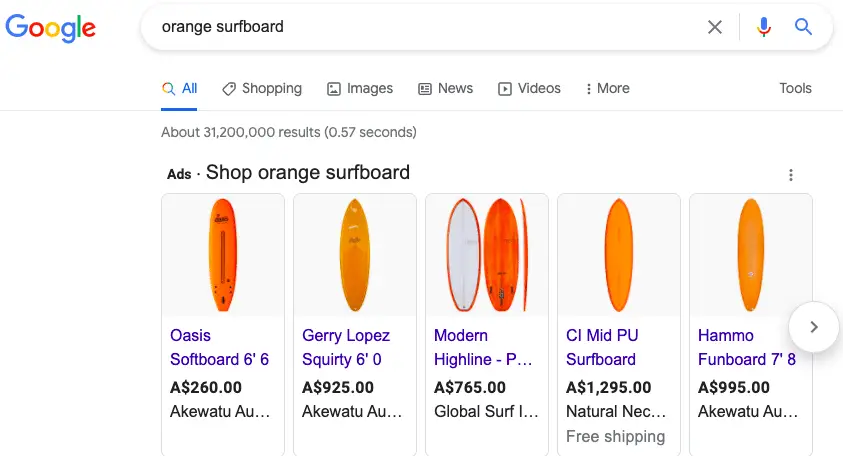
TikTok Ads
TikTok ads are similar to Facebook ads but are a great option in 2022 as advertising costs are generally lower. Unique and wow factor products are the best options for advertising.
Products aimed at a younger audience are the ideal choice for TikTok as the average demographic is much younger than Facebook.
Instagram Influencers
Reaching out to influencers on Instagram is a very different approach to advertising than the other options. It may be the best choice for a one-product branded store to advertise its products this way.
You simply message the influence how much it will cost to have them make a post of them using and talking about your product. This can be very effective as their followers often trust and aspire to be like them. influencers with under 100k followers are a very cost-effective way of getting your brand out there.
7. How to Optimize a One-Product Store
There are endless things you can do to a store to optimize a store. To do this you need to monitor the various metrics of your store and see how they perform as you make changes to your store. The most important metrics you need to monitor are:
- Click through rate (CTR) – The percentage of people who click your ads after seeing them.
- Average order value (AOV) – The amount of money each customer spends from making a purchase.
- Conversion rate – This percentage of sales you make from visitors to your store.
- Return on ad spend (ROAS) – The amount of revenue you received from each dollar spent on ads.
- Shopping cart abandonment rate – The number of people who add to cart and leave without finishing their purchase.
You need to monitor all these metrics closely and implement changes to your store that will impact each one and compare how they perform.
For example, you may have fully optimized your ads and your CTR is high, but maybe your conversion rate is low. You will need to split test different aspects of your store to better understand why people are not making a purchase.
Or they may be adding to cart but your cart abandonment rate is high. You need to figure out why?
- Are there too many steps in between add to cart and making a purchase?
- Are your shipping rates too high? You may be better off adding the shipping rates to the product price and offering free shipping.
- Is there a payment security concern?
You need to split-test and make changes until each metric is fully optimized. This is far easier with a one-product store compared to a store selling multiple products.
8. Buy Your Product in Bulk
One of the biggest advantages of a one-product store is buying your product in bulk. With a niche or general store, you might have 100 products in your store, purchasing 100 products in bulk is not realistic and far too risky. For more information on the 3 main store types, I suggest you read my article one-product vs niche vs general stores.
You will need to consider this when deciding on your one-product store. For example, if your product has a lot of variants in terms of size, colors, models etc, ordering in bulk can be a little complicated.
I would recommend trying to minimize the number of variants you offer in your store. Over time you will better understand the amount of inventory for each variant you will require and you can slowly add additional variants when needed.
Dropshipping should only be required for your store during the initial stages. Once you start making consistent sales, a better option is to order in bulk from Alibaba. It’s a superior alternative in terms of shipping times, product quality, reliability, pricing and the list goes on.
Everything on Alibaba from price and MOQ (Minimum order quantity) is negotiable.
You have 2 main options once you have decided to order in bulk.
- Have the order shipped to your country and ship your products to customers domestically. You can either do this from home if it’s manageable or use a 3PL service to ship your products individually on your behalf. This will obviously incur a fee but it may be a better option.
- Work with an agent in China and have them negotiate pricing, store your inventory and ship your products individually to your customers. This may work out cheaper and means you can ship worldwide, however, shipping times will be longer.
Common Questions Around One-Product Stores
Should you private label your products?
Private labeling of a product builds trust and is a great option once a store is established. In the beginning stages, it can be a little risky to order private labeled products in bulk. The cost will be more and if they don’t sell it will be harder to sell a bulk order of someone’s design and logo on the products.
Which apps are best for a one-product store?
- LOOX reviews
- Klaviyo for email marketing
- Best currency converter
- Tiny IMG SEO to compress images and improve site speed
- PushOwl for abandoned cart recovery
- Ultimate Sales Boost to create scarcity and urgency (urgency pop-ups can appear a little spammy on branded stores)
Should you have trust badges in your store?
If you have a branded and professional store, trust badges are generally unnecessary. Brands go for simple and sleek website design with less clutter and trust badges can make a store look spammy. If your target audience is the older demographic trust badges could be justified as they are the most concerned about purchasing online.
Do one-product stores fail often?
Yes, one-product stores have a high failure rate in the early stages. Your entire stores success is based on a single product, if it fails your store fails. However, once a store is established they are often more passive and have a better chance of succeeding long-term compared to other stores.
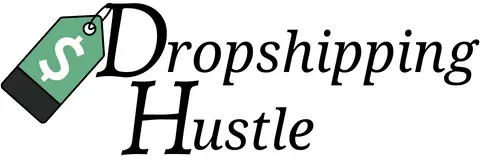

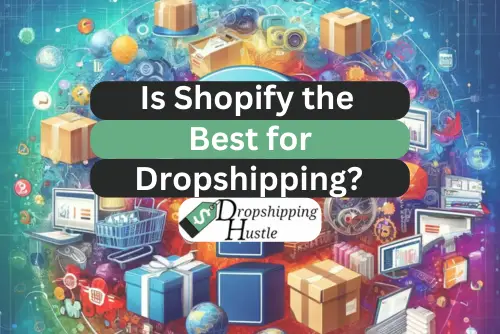

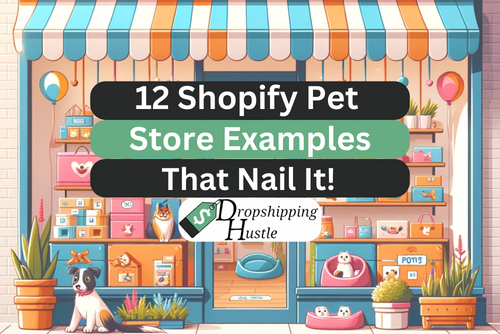
Leave a Reply